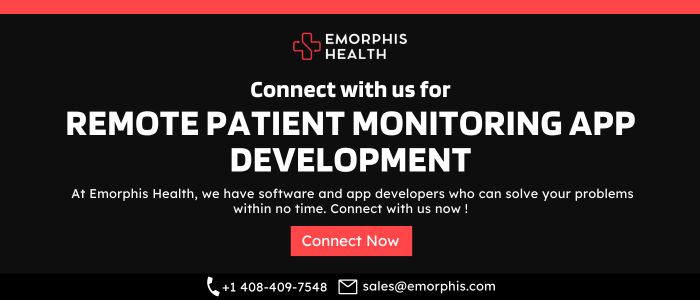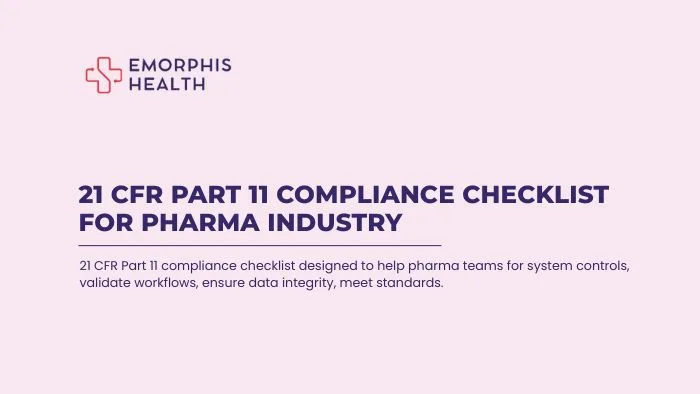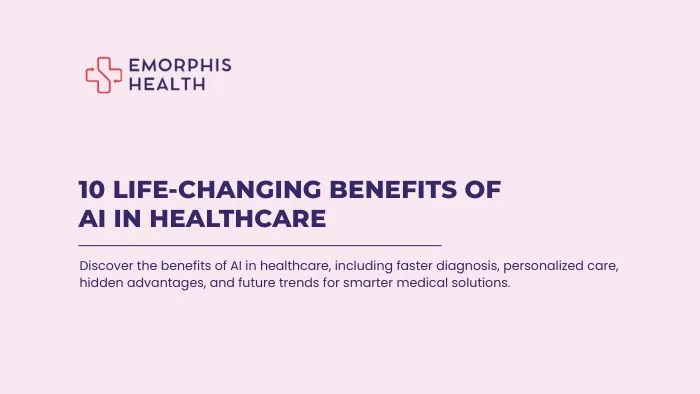The demand for intelligent and efficient patient care models is at an all-time high. At the heart of this transformation are AI-powered remote patient monitoring solutions, enabling healthcare providers to manage patients proactively, reduce hospital admissions, and deliver superior care, regardless of location. As we move into 2025 and beyond, the adoption of AI-powered remote patient monitoring solutions is no longer just a trend, it is a necessity for modern healthcare systems.
This article explores the growing significance, core AI features, benefits, future potential, and integration capabilities of AI-powered remote patient monitoring solutions in today’s digitally connected health ecosystem.
What Are AI-Powered Remote Patient Monitoring Solutions?
See Contents
- 1 What Are AI-Powered Remote Patient Monitoring Solutions?
- 2 Key AI Features That Enhance Remote Patient Monitoring Solutions
- 3 Benefits of AI-Powered Remote Patient Monitoring Solutions
- 4 Future of AI-Powered Remote Patient Monitoring Solutions
- 5 Essential Integrations to Maximize the Impact of AI-Powered RPM
- 6 Use Cases of AI-Powered Remote Patient Monitoring Solutions
- 7 Challenges and Considerations
- 8 Conclusion
AI-powered remote patient monitoring solutions are advanced platforms or systems that use artificial intelligence to continuously collect, analyze, and interpret patient health data from remote locations. These solutions are designed to support chronic disease management, post-operative recovery, senior care, and wellness tracking, without the need for frequent hospital visits.
These platforms use data from wearable devices, biosensors, mobile apps, and IoT-based medical equipment to monitor parameters such as heart rate, blood pressure, glucose levels, oxygen saturation, and more. Artificial intelligence ensures that the vast amount of data generated is processed in real time to detect anomalies, trigger alerts, and support clinical decision-making.
Key AI Features That Enhance Remote Patient Monitoring Solutions
The success of AI-powered remote patient monitoring solutions lies in their core AI-driven capabilities. In 2025 and beyond, these features are set to become even more sophisticated and impactful:
1. Real-Time Predictive Analytics
AI algorithms analyze continuous data streams to predict potential health risks before they become critical. For instance, changes in heart rate variability or oxygen levels can be early indicators of respiratory distress or heart failure. AI-powered remote patient monitoring solutions use this data to generate timely alerts for intervention.
2. Intelligent Alerting and Prioritization
Traditional systems often produce alarm fatigue due to excessive, low-priority alerts. AI addresses this by learning patient-specific baselines and only generating alerts when deviations are truly significant. This ensures that healthcare teams focus on patients who need attention most.
3. Natural Language Processing (NLP)
NLP capabilities allow AI-powered remote patient monitoring solutions to interpret physician notes, patient feedback, and EHR (electronic health record) data. This enhances the system’s ability to create contextual and comprehensive patient profiles, leading to more personalized monitoring.
4. AI Chatbots and Virtual Health Assistants
Integrated AI chatbots can engage with patients to collect symptoms, medication adherence data, and self-reported metrics. These conversational agents reduce the burden on clinicians and keep patients more engaged in their care plans.
5. Computer Vision for Video Monitoring
For remote monitoring in home settings, AI-powered cameras can assess movement patterns, detect falls, or observe signs of distress. This is especially beneficial in elderly care and post-operative rehabilitation.
6. Auto-Triage and Risk Stratification
AI systems can automatically stratify patients into low, medium, or high-risk categories based on real-time and historical data. This allows providers to allocate resources efficiently and prioritize high-risk individuals.


Benefits of AI-Powered Remote Patient Monitoring Solutions
The impact of AI-powered remote patient monitoring solutions extends across clinical outcomes, operational efficiency, and patient satisfaction. Here’s how:
Improved Chronic Disease Management
Patients with diabetes, heart failure, COPD, and hypertension benefit significantly from real-time monitoring and early interventions, reducing emergency visits and hospital readmissions.
Reduced Healthcare Costs
By preventing complications and hospital stays, these solutions result in significant cost savings for providers, payers, and patients. AI helps optimize care pathways and resource allocation.
Enhanced Patient Engagement
AI-driven notifications, virtual assistants, and personalized insights keep patients more engaged and compliant with treatment plans, leading to better long-term outcomes.
Scalability and Accessibility
AI-powered remote patient monitoring solutions allow healthcare providers to monitor thousands of patients simultaneously, breaking geographic barriers and ensuring care continuity in underserved areas.


Future of AI-Powered Remote Patient Monitoring Solutions
As we enter a new era of healthcare, AI-powered remote patient monitoring solutions will become more advanced and integral to care delivery. Here’s what the future holds:
1. Hyper-Personalized Care Plans
AI will use genomic data, lifestyle information, social determinants of health, and behavior analytics to deliver hyper-personalized care plans tailored to each patient’s unique profile.
2. Multi-Modal Data Fusion
Combining data from wearables, imaging, voice, and medical history, AI systems will provide a more holistic view of patient health, improving decision-making.
3. Federated Learning for Data Privacy
To maintain data privacy while improving model accuracy, federated learning will allow AI algorithms to learn across decentralized patient datasets without moving the data.
4. Integration with Genomics and Biomarkers
By incorporating genetic and biomarker data, AI-powered remote patient monitoring solutions will predict predisposition to diseases and recommend preventive strategies, reshaping preventive care.
5. Adaptive AI Models
AI models will self-learn and evolve with each new data point, making the system more adaptive to individual patient behaviors and environmental changes.
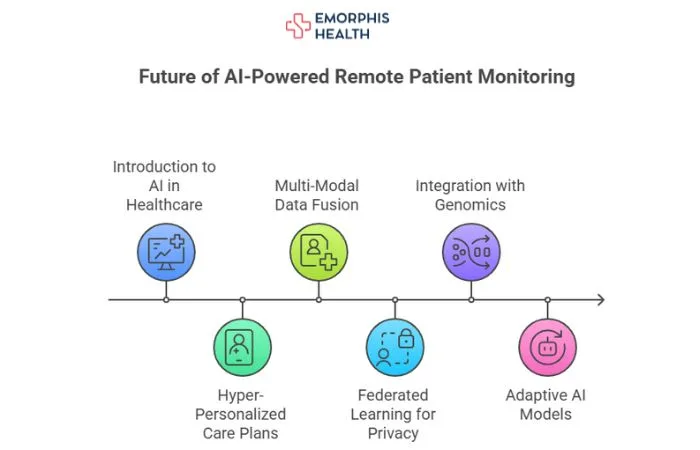

Are Wearables and AI the Future of Healthcare? Explore details on Remote Patient Monitoring
Essential Integrations to Maximize the Impact of AI-Powered RPM
The effectiveness of AI-powered remote patient monitoring solutions can be significantly enhanced through seamless integration with other healthcare systems and technologies:
1. Electronic Health Record (EHR) Systems
Bidirectional integration with EHR platforms ensures that real-time monitoring data is accessible to clinicians within their existing workflows. AI uses EHR data to enrich insights and recommendations.
2. Telemedicine Platforms
Combining RPM with telehealth allows providers to act on alerts immediately, schedule virtual consultations, and follow up on abnormal readings in real time.
3. Wearables and IoT Medical Devices
Smartwatches, glucose monitors, ECG patches, and BP cuffs can feed continuous data into the AI system. Standardized APIs and device interoperability are key for smooth data ingestion.
4. Pharmacy Systems
Integration with pharmacy systems helps track medication adherence. AI can send reminders or adjust monitoring parameters based on medication schedules.
5. Hospital Information Systems (HIS)
Connecting with HIS allows AI-powered remote patient monitoring solutions to align with resource management, bed availability, and patient admission/discharge planning.
6. Insurance Platforms
Payers can access AI-generated risk profiles and adherence reports to validate coverage, initiate preventive programs, and align reimbursement strategies with value-based care models.
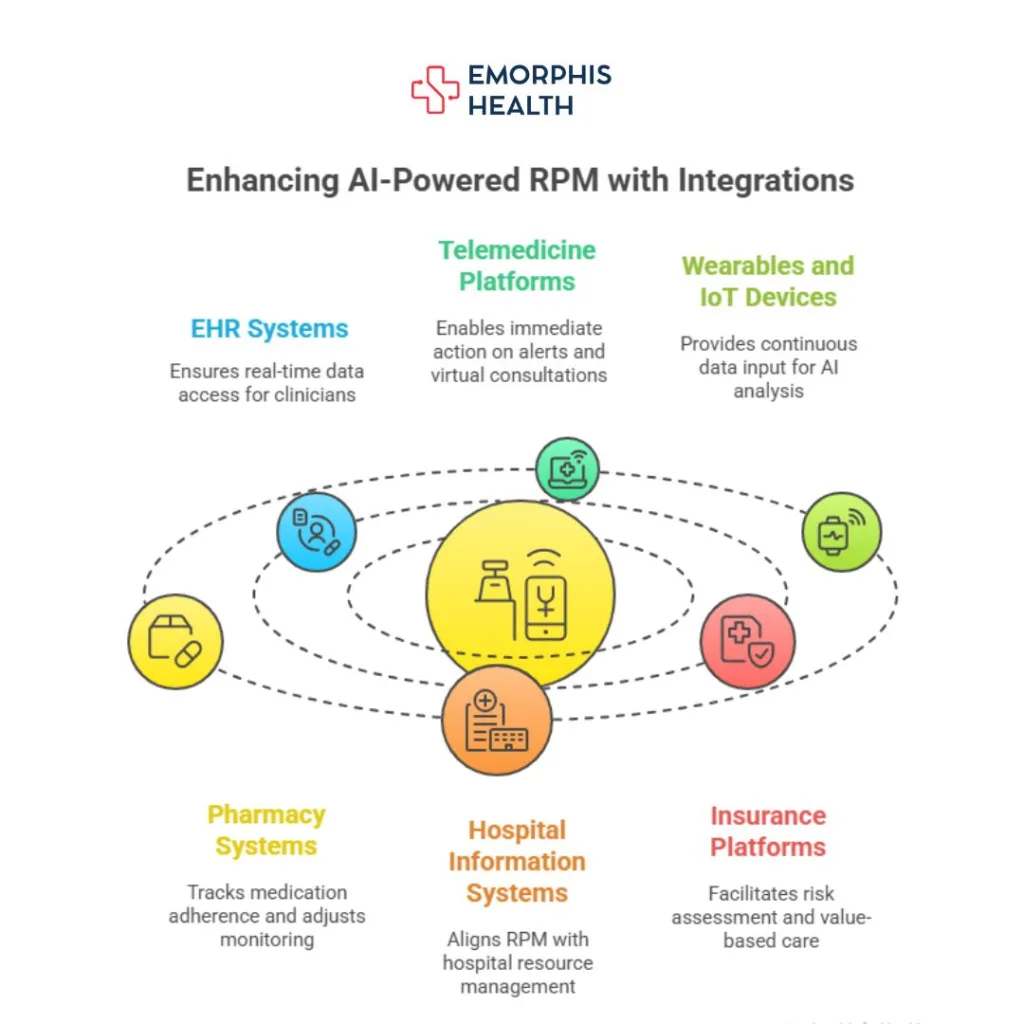

Use Cases of AI-Powered Remote Patient Monitoring Solutions
Here are some real-world scenarios where AI-powered remote patient monitoring solutions are making a difference:
1. Post-Operative Care
After surgeries, patients are monitored at home for complications like infections or blood clots. AI tracks vitals and activity levels to detect early signs of complications.
2. Heart Failure Management
AI detects fluid retention or arrhythmias in heart failure patients, triggering timely interventions and reducing hospitalizations.
3. Diabetes Monitoring
Continuous glucose monitoring combined with AI algorithms predicts hypo/hyperglycemic events, suggesting timely actions or dietary adjustments.
4. Elderly Fall Detection
AI-enhanced vision systems monitor elderly patients at home and send alerts if unusual movements or falls are detected, ensuring quick response.
5. Mental Health Tracking
Wearables measure sleep, heart rate variability, and activity levels. AI analyzes these metrics to identify signs of depression, anxiety, or stress.
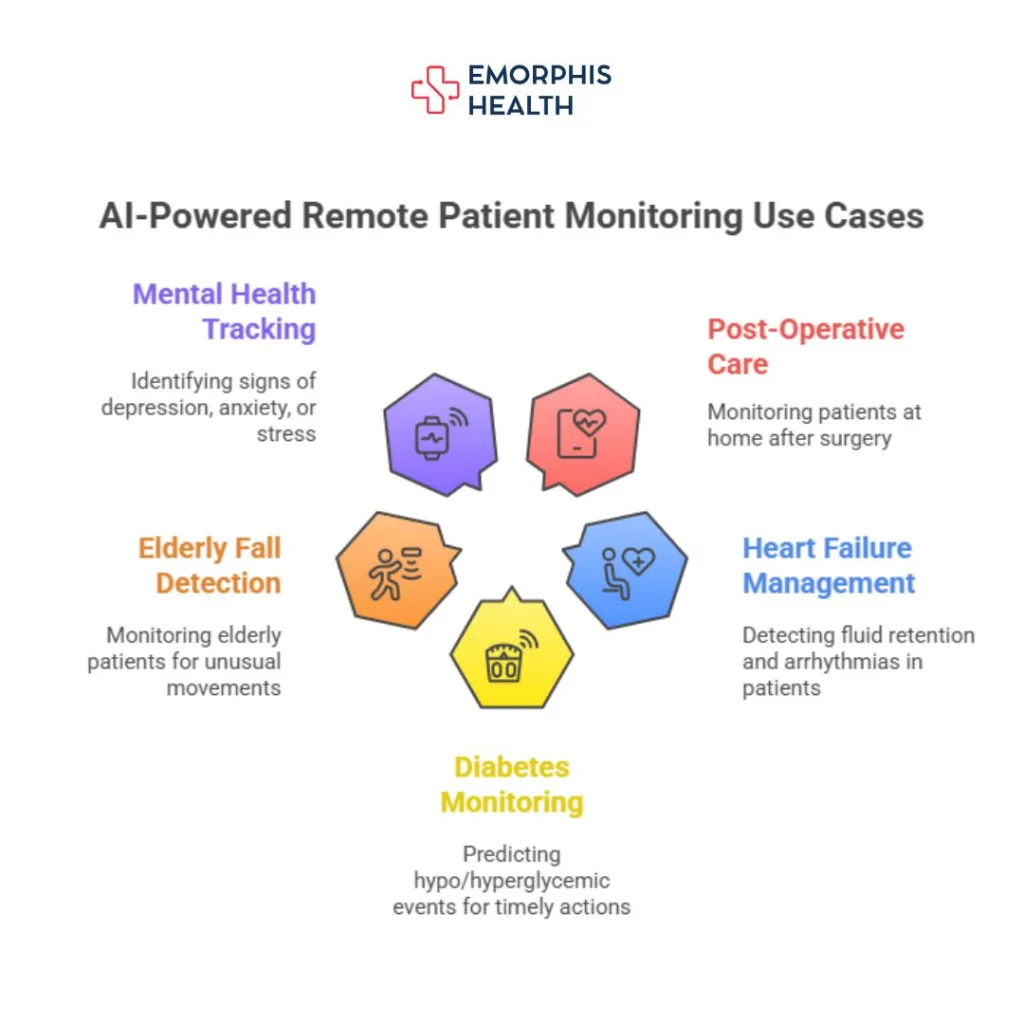

Find details on remote patient monitoring apps.
Challenges and Considerations
While AI-powered remote patient monitoring solutions are revolutionary, several challenges need to be addressed:
-
Data Privacy and Security: HIPAA and GDPR compliance must be strictly enforced, especially with real-time data flows.
-
Device Compatibility: Ensuring interoperability among a wide range of medical devices can be technically complex.
-
Patient Digital Literacy: Some users, especially older adults, may need support in using these technologies effectively.
-
Reimbursement Models: Regulatory frameworks must evolve to support AI-enhanced RPM under insurance coverage and value-based care incentives.
Conclusion
AI-powered remote patient monitoring solutions represent the future of proactive, predictive, and patient-centric healthcare. By combining real-time data collection with intelligent insights, they allow clinicians to make faster, more informed decisions while improving outcomes and reducing costs. As AI technology continues to evolve, so will the capabilities of these systems, moving from reactive care to a truly preventative and personalized model.
Check more details on custom remote patient management software development.
Healthcare providers who invest in integrated, scalable, and AI-driven RPM platforms will not only lead the charge in digital transformation but also enhance patient trust, engagement, and satisfaction. In 2025 and beyond, AI-powered remote patient monitoring solutions will not only be an option but also an essential component of high-quality care delivery.


